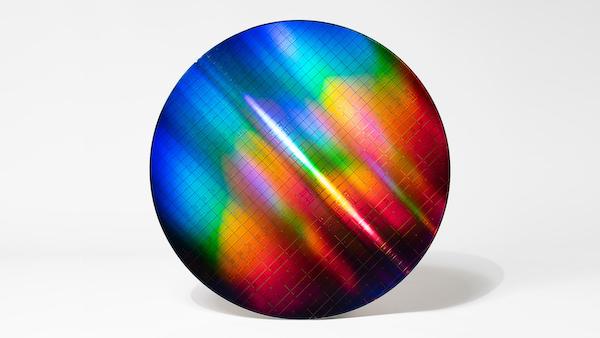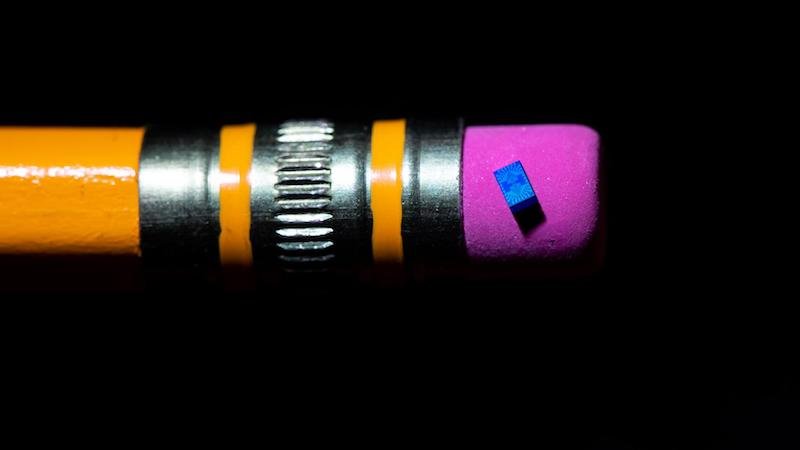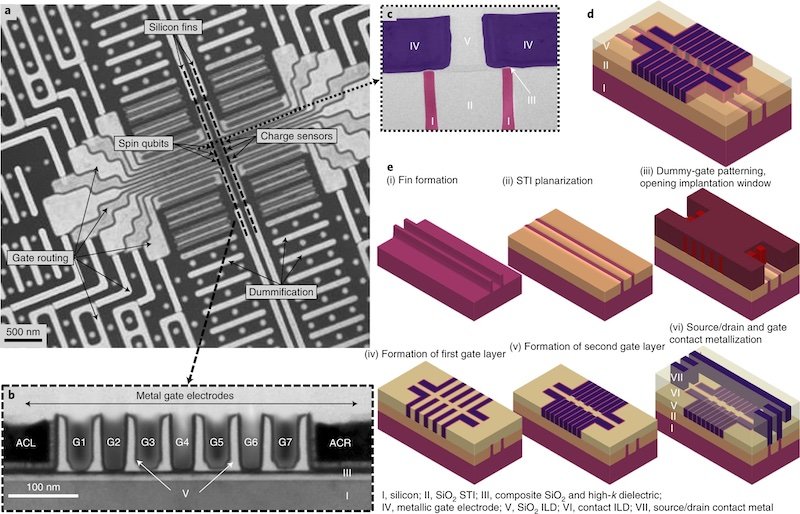Quantum computing is still a very young and emerging field, and, as such, there are an appreciable number of roadblocks that still need to be overcome.
One of the most significant challenges in the field is scalability: how to create a stable and reliable system consisting of thousands or millions of qubits?

Intel and QuTech have manufactured this wafer with working spin qubits. Image used courtesy of Intel
The answer to this question has been far from straightforward, with various factions taking different approaches to the qubit. Recently, Intel and QuTech jointly made significant news in the industry when they announced the first successful fabrication of silicon-based qubits.
In this article, we’ll discuss silicon qubit technology, Intel and QuTech’s recent fabrication success, and its implications on the field.
Potential of Silicon-based Quantum Dot Qubits
Of the many approaches to qubits and quantum computing, one of the most promising is that of silicon-based qubits.
The working principle of these systems is to trap conduction electrons within a gate-defined quantum dot (QD) and use their spin as the qubit in the system.
These devices work similarly to a transistor in that a gate above a conducting channel controls the flow of electrons one at a time. One way to scale this up to a linear qubit array is to replace the gate with multiple gates, which are used to control each QDs occupation and precisely tune the spin and tunnel coupling of nearby electrons.
From a performance perspective, spin qubits in gate-define QDs offer the benefits of very small size, long coherence times, and relatively high-temperature operation (1–4K).
Beyond performance, however, one of the most considerable purported benefits of silicon-based qubits is their potential for scalability. Most importantly, silicon-based qubits should be compatible with traditional semiconductor manufacturing processes.
This compatibility means that silicon-based qubits have the potential to be easily fabricated with technology that already exists today. The result is that silicon-based quantum computers offer a clearly defined path to low costs, high densities, and high yields.
Intel and QuTech Scale Qubit Fabrication
Recently, Intel and QuTech made significant waves in the industry when they announced the successful fabrication of silicon-based quantum dot qubits for the first time.

Intel and QuTech's device are shown for scale. Image used courtesy of Intel
In their paper published in Nature, the researchers described their new process, which successfully leveraged advanced transistor fabrication techniques to fabricate qubits on 300 mm silicon.
The researchers, using all-optical lithography and fully industrial processing, achieved quantum dots that are hosted at a 28Si/28SiO2 interface while also achieving nanoscale gate patterns.

The fabrication of the new QD device. Image used courtesy of Zwerver et al
The impressive result is that their new process can fabricate more than 10,000 arrays with several silicon-spin qubits on a single wafer while marinating a yield up to 98%. This new process used the same equipment that Intel used in their latest-generation complementary metal-oxide-semiconductor (CMOS) products, showing the ease of integration of its qubits within the traditional CMOS manufacturing scheme.
Even further, because of the shared technology, the new process also benefits from being compatible with any other CMOS technology. This compatibility offers the potential to integrate classical circuits next to the qubit chip, which has been another significant bottleneck to quantum scaling.
Implications on the Quantum Field
According to Intel, this new process's yield and qubit count dramatically improves over what has been achieved with conventional approaches thus far. The companies see this as a groundbreaking achievement, one which has the potential to pave the way for the future of scalable, affordable, and highly integrated quantum computers.
With this new process, Intel and QuTech have made a significant impact on the field's future direction. By successfully proving the manufacturability and viability of a silicon-based qubit, the researchers have made a considerable case for silicon-based qubits and could likely influence the research and development efforts of the field for years to come.
